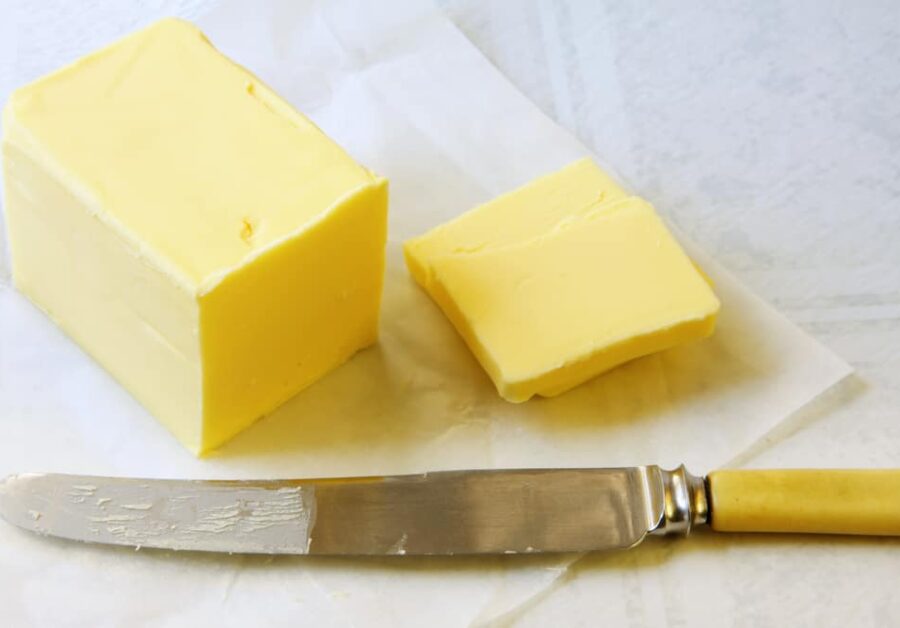When I grew up, my grandfather had a peculiar snacking habit.
One of his favorite things to do was to take a pat of butter out of the fridge, neatly unwrap it, put it on top of a simple saltine cracker and pop it into his mouth. The pats of butter were sold in individual packets of wax paper wrappers then, so you can imagine how often he indulged in his favorite treat.
I think he might’ve talked me into trying once or twice, but I didn’t care for it.
Now, don’t get me wrong, I love butter – love, love, love it!
But when it comes to butter worship, dear old grandpa won that contest hands down.
I think that his love of the butter pat came from his childhood. Back then, butter pats were still considered a bit of a luxury both in restaurants and especially in the home.
Butter would be pressed into small, ornate molds and served table side with warm, fresh bread, adding a bit of class and flair to the meal.
Even though pats of butter are still with us today, the decorative aspect of them is pretty much a thing of the past. Ornate or not, the likelihood is good that you’ve probably seen them at a restaurant or hotel.
But even if you’re not sure about what a pat of butter is, the answer is pretty simple.
A pat of butter is a single serving (or portion) of butter, usually in the shape of a square and weighing in at around 5 grams (or 1/4 ounce). They can be individually wrapped or more likely, they’ll be in a single serving foil packet or small tub with a tabbed corner for easy opening.
Why Is It Called a Pat of Butter?
While the origin of the pat of butter isn’t perfectly clear, there is a theory about how it came to be.
Basically, it relates to tools that were used when butter was still made by hand. The tools, also referred to as Scotch hands, are paddles made of wood. They are double sided with one side having grooves and the other side being smooth.
Prior to refrigeration, it was necessary to handle the butter with these tools, otherwise it would melt easily. The paddles were used to mold and shape it, or pad it, hence the term pat of butter.
While the name stuck, the methods for producing them changed along with technology. Today, pats of butter are mass produced for the hospitality industry or produced in bulk quantities for grocery stores.
Interestingly, in the United Kingdom, the term used to describe the rough equivalent of a pat of butter is a knob of butter. A knob of butter is larger than a pat, most of the time measuring between one to two tablespoons. It’s also considered to be a less precise measurement and is often used in culinary circles when referring to the amount of butter needed to coat a pan.
How Many Pats Are in a Stick of Butter?
Since the standard size for a stick of butter in the United States is four ounces, it’s generally assumed that a pat is one eighth of a stick or eight pats of butter per stick.
Using this same measurement, a half pound of butter will yield 16 pats of butter and a pound of butter will yield 32 pats of butter.
Of course, all of these measurements assume you will slice refrigerated butter. If your butter is room temperature or otherwise softened, the amount of pats each stick will yield will vary.
Is a Pat of Butter a Tablespoon?
It depends but in general, a pat of butter will be somewhere between 1/3 to 1/2 tablespoon. So a tablespoon would equate to two pats of butter, not one.
What Does a Pat of Butter Weigh?
Following on from our example above, if you are preparing your own butter pats from a four-ounce stick of butter, then each pat will weigh approximately 1/2 ounce.
Commercially produced pats of butter usually weigh around 5 grams or 1/4 ounce per container.

I’m Griffin and I make my living as a freelance writer and wannabe sci fi author. Besides my obsession with words, I have a few others which may or may not include craft beer, backcountry hikes and spending time with loved ones – preferably in that order. Thanks for checking out my work and I hope you enjoy it!

